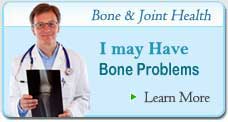» Anti-Aging
» Bones Joints & Muscle Health
» Cardiovascular Health
- Hip And Knee Joint Replacements: The Infection Risks
- All About Excessive Sweating & How To Stop Hyperhidrosis Sweats Ruining Your Life
- Should You Be Worried About Diabetic Retinopathy? Find Out If You Are Developing & How To Prevent It
- Must Know Lyme Disease Information - You Might Be Surprised To Find Out...
- Do You Have Sleep Apnea? Find Out What It Is And How To Treat It
» Chronic Pain Management
» Dental Health & Wellness
» Digestive Health Problems
» Health Care
» Mental Health
» Sexual Health
» Skin Care

Do You Have Sleep Apnea? Find Out What It Is And How To Treat It
Sleep apnea is a disorder in which breathing is disrupted during sleep. The brain will automatically restart the process, often without the subject’s conscious awareness, but there is a physical toll. At minimum, sleep apnea results in daytime fatigue. At worst, it is associated with heart attack, high blood pressure, and stroke.
Sleep apnea is a serious, potentially life threatening condition that is far more common than generally understood. First described in 1965, sleep apnea is a breathing disorder characterized by brief interruptions of breathing during sleep.
It owes its name to the Greek word, apnea, meaning, “want of breath.”
Two Types of Sleep Apnea
There are two types of sleep apnea: central and obstructive. Central sleep apnea, which is less common, occurs when the brain fails to send the appropriate signals to the breathing muscles to initiate respiration.
Obstructive sleep apnea is far more common and occurs when air cannot flow into or out of the person’s nose or mouth although efforts top breathe continue.
In a given night, the number of involuntary breathing pauses or “apneic events” may be as high as 20 to 30 or more per hour. These breathing pauses are almost always accompanied by snoring between apnea episodes, although not everyone who snores has this condition.
Sleep Apnea can also be characterized by choking sensations. The frequent interruptions of deep, restorative sleep often lead to early morning headaches and excessive daytime sleepiness.
In normal conditions, the muscles of the upper part of the throat keep this passage open to allow air to flow into the lungs. These muscles usually relax during sleep, but the passage remains open enough to permit the flow of air.
Some individuals have a narrower passage, and during sleep, relaxation of these muscles causes the passages to close, and air cannot get into the lungs. Loud snoring and labored breathing occur. When complete blockage of the airway occurs, air cannot reach the lungs.
Early recognition and treatment of sleep apnea is important because it may be associated with irregular heartbeat, high blood pressure, heart attack, and stroke.
What Ages Does Sleep Apnea Occur?
Sleep apnea occurs in all age groups and both sexes, but it is more common in men (though it may under diagnosed in women) and possibly young African Americans. It has been estimated that as many as 18 million Americans have sleep apnea.
Four percent of middle aged men and 2 percent of middle aged women have sleep apnea along with excessive daytime sleepiness. People most likely to have or develop sleep apnea include those who snore loudly, and are also overweight, or have high blood pressure, or have some physical abnormality in the nose, throat or other parts of the upper airway.
Sleep apnea seems to run in some families, suggesting a possible genetic basis.
Symptoms That May Indicate You Have Sleep Apnea
Often the person who has obstructive sleep apnea does not remember the episodes of apnea during the night. The predominate symptoms are usually associated with excessive daytime sleepiness due to poor sleep during the night. Other symptoms include:
- Loud snoring
- Periods of not breathing
- Awakening not rested in the morning
- Morning headaches
- Weight gain
- Limited attention
- Memory loss
- poor-judgement
- Personality changes
- Lethargy
Additional symptoms associated with this disease:
- Leg swelling
- Automatic behavior (performing actions by role)
- Hyperactive behavior
- High Blood pressure
An estimated 18 million Americans have sleep apnea. However,m few of them have had the problem diagnosed. Patients with the typical features of sleep apnea, such as loud snoring, obesity, and excessive daytime sleepiness should be referred to a specialized sleep center that can perform a test called polysomnography.
This test records the patients brain waves, heartbeat, and breathing during the entire night. If sleep apnea is diagnosed, several treatments are available. Mild sleep apnea frequently can be overcome through weight loss or by preventing the person from sleeping on his or her back.
Other people may need special devices or surgery to correct the obstruction. People with sleep apnea should never take sedatives or sleeping pills, which can prevent them from awakening enough to breathe.
Treatments That Can Help
The objective of treatment is to keep the airway open to prevent apneic episodes during sleep. The specific therapy for sleep apnea is tailored to the individual patient based on medical history, physical examination, and the results of polysomnography.
Medications are generally not effective. Oxygen administration may safely benefit certain patients but does not eliminate sleep apnea or prevent daytime sleepiness.
Thus the role of oxygen in the treatment of sleep apnea is controversial, and it is difficult to predict which patients will respond well. It is important that the effectiveness of the selected treatment be verified, this is usually accomplished by polysomnography.
Behavioral Therapy
Behavioral changes are important part of the treatment program, and in mild cases behavioral therapy may be all that is needed. The individual should avoid the use of alcohol, tobacco, and sleeping pills, which make the airway more likely to collapse during sleep.
Overweight patients can benefit from losing weight. Even a 10 percent weight loss can educe the number of apneic events for most patients.
Physical or Mechanical Therapy Surgery
Some patients with sleep apnea may need surgery. Although several surgical procedures can be used to increase the size of the airway, none of them is completely successful or without risks. More than one procedure may need to be tried before the patient realizes any benefits.
Laser assited uvulopalatoplasty(LAUP) is done to eliminate snoring but hs not been shown to be effective in traeting sleep apnea. The procedure involves using a laser device to eliminate tissue in the back of the throat.
New Apnea Research
Sleep apnea is currently one of the most active areas of sleep research. The National Institute of Neurological Disorders and Stroke has notified investigators that it is seeking grant applications in both clinical and basic sleep and wakefulness research, including neurological causes and consequences of sleep apnea. Research in sleep apnea is also funded by the National Heart, Lung, and Blood Institute and the National Institute on Aging.
You May Also Find Informative:
Aging Fit - Health Research & Information
Better Health. Energy. Quality.






